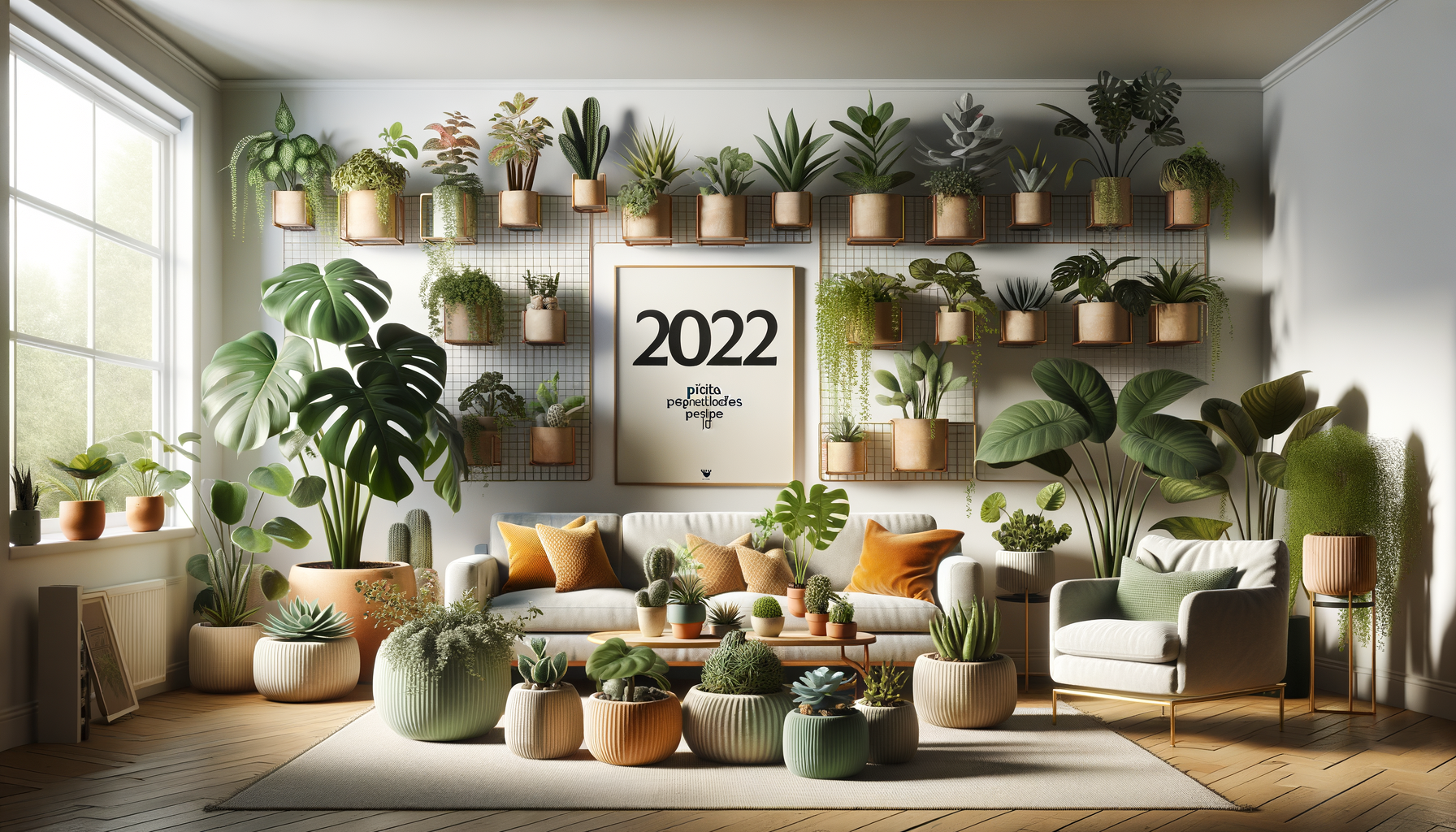The Rise of Indoor Plants: A Green Revolution
In recent years, indoor plants have surged in popularity, becoming an essential element of modern interior design. This trend is not just about aesthetics; it’s a reflection of a growing desire to reconnect with nature. As urban living spaces become more compact, the inclusion of greenery offers a breath of fresh air, both literally and figuratively. Indoor plants are known to improve air quality by absorbing toxins and releasing oxygen, making them a practical addition to any home.
The trend is also driven by the increasing awareness of the mental health benefits associated with indoor plants. Studies have shown that being around plants can reduce stress levels, enhance mood, and boost productivity. This has led to a surge in demand, with plant enthusiasts sharing their green spaces on social media, further fueling the trend. The hashtag #PlantParent has gained traction, highlighting a community of individuals dedicated to cultivating their indoor jungles.
Moreover, the variety of plants now available caters to different preferences and lifestyles. From low-maintenance succulents to lush ferns and towering fiddle leaf figs, there’s a plant for every type of plant parent. This diversity allows individuals to personalize their spaces, creating a unique atmosphere that reflects their style and personality.
Trending Plant Varieties: From Classics to Exotics
The world of indoor plants is vast and varied, with certain species gaining more attention than others. Among the classics, the Monstera deliciosa, also known as the Swiss Cheese Plant, continues to be a favorite. Its large, fenestrated leaves add a touch of the tropics to any room. Snake plants and pothos are also highly regarded for their resilience and air-purifying qualities.
On the more exotic end, the popularity of rare and unusual plants has skyrocketed. Varieties like the Pink Princess Philodendron and the String of Hearts are coveted for their unique appearances. These plants often require more specialized care, which appeals to experienced plant enthusiasts looking for a challenge.
Another trend is the resurgence of vintage plants, such as the rubber plant and the spider plant, which are making a comeback. These plants were popular in the mid-20th century and are now being rediscovered by a new generation of plant lovers. Their ability to thrive in various conditions makes them an excellent choice for both beginners and seasoned plant parents.
Styling with Indoor Plants: Creating Your Green Oasis
Incorporating indoor plants into your home decor requires a blend of creativity and practicality. The key is to choose plants that complement the existing design elements of your space. For minimalist interiors, consider plants with clean lines and simple shapes, such as the ZZ plant or the peace lily. These plants add a touch of elegance without overwhelming the space.
For those with more eclectic tastes, mixing different plant species and sizes can create a vibrant, jungle-like atmosphere. Hanging plants, like the string of pearls or trailing ivy, add dimension and depth, especially in smaller spaces. Grouping plants together can also enhance their visual impact, creating a lush corner that serves as a focal point in the room.
When styling with plants, consider the use of decorative pots and planters. These can range from sleek, modern designs to rustic, handcrafted pieces, allowing you to customize the look to suit your taste. Additionally, integrating plant stands or shelves can elevate your green display, literally and figuratively, adding height and interest to your decor.
Indoor Plant Care: Nurturing Your Green Companions
Taking care of indoor plants requires understanding their specific needs, which can vary significantly between species. Light, water, and soil are the three pillars of plant care, and getting these right is crucial for healthy growth. Most indoor plants thrive in bright, indirect light, but some, like snake plants and ZZ plants, can tolerate lower light conditions.
Watering is another critical aspect, and it’s important to strike a balance. Overwatering is a common mistake that can lead to root rot. It’s advisable to let the soil dry out between waterings for most plants. Using a moisture meter can help determine when it’s time to water, ensuring your plants receive the right amount of hydration.
Soil quality and potting are also essential. Using well-draining soil and pots with drainage holes can prevent waterlogging. Regularly checking for pests and diseases is part of maintaining plant health. Common pests like spider mites and aphids can be managed with natural remedies or insecticidal soap.
The Future of Indoor Plant Trends
As we look to the future, the indoor plant trend shows no signs of slowing down. Innovations in plant care technology, such as smart planters and automated watering systems, are making it easier for individuals to maintain their green spaces. These tools are particularly appealing to busy urbanites who may not have the time for traditional plant care routines.
Sustainability is also becoming a key consideration in the plant industry. There is a growing demand for eco-friendly practices, such as using biodegradable pots and sourcing plants from sustainable nurseries. This shift reflects a broader trend towards environmentally conscious living, with consumers seeking to reduce their ecological footprint.
Furthermore, the integration of plants into commercial spaces is gaining momentum. Offices, restaurants, and retail environments are incorporating greenery to create more inviting and healthier spaces. This trend is supported by research indicating that plants can improve concentration, reduce stress, and enhance overall well-being in work and leisure environments.




Leave a Reply